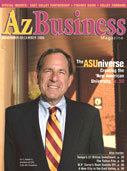Note: All fields are required.
from our blog
February 10, 2021
Seatback Failures
Front occupant seatbacks play a vital safety role in rear-end crashes, similar to the purpose of airbags and seatbelts in frontal impacts. In a rear impact, a front seat should be designed to absorb energy and contain the occupant in the front seating space. Weak, defective front seats can fail, collapse and cause front occupants […]

State Farm v. Campbell Should Be Revisited – Punitive Damages in Insurance Bad Faith Claims
Punitive damages are monetary awards given to plaintiffs in addition to special and general damages. Punitive damages are designed to punish insurers and other defendants for bad conduct or to deter the defendant and others from similar misconduct in the future. Compensatory damages on the other hand are designed only to pay for the actual harm the plaintiff experienced. Because the nature of punitive damages is much broader than compensatory damages, punitive damages tend to be significantly higher than compensatory damages.
Punitive damages are not available for breach of contract claims, which are limited to the amount necessary to put the party in the position they should have been if the contract had been performed. However, bad faith claims are based on tort law that allows punitive damages.
Punitive damages have played a role in U.S. law since the 19th century and have been traditionally been decided on state law grounds. However, the modern trend has been for the courts to completely ignore the deterrent purpose and to limit recovery for punitive damages.
In State Farm Mut. Auto Ins. Co. v. Campbell, 538 U.S. 408 (2003) the U.S. Supreme Court seems to establish that courts must examine the ratio between the actual or potential harm that a plaintiff suffers and the punitive damages awarded in determining whether punitive damages are acceptable. In the Campbell case the Supreme Court held that excessive punitive damages violate the due process clause of the Fourteenth Amendment because they served no legitimate purpose and merely arbitrarily deprive a party of property without adequate notice of the severity of the consequences of their conduct beforehand. Although the Court did not provide a bright line limitation to punitive damage caps it stated that few awards as great as 10 times compensatory damages would satisfy due process.
The problem is that the Supreme Court had up to that point “consistently rejected the notion that the constitutional line is marked by a simple mathematical formula, even one that compares actual and potential damages to the punitive award.” BMW of N. Am. v. Gore, 517 U.S. 569 (1996)(citing TXO Prod. Corp. v. Alliance Res. Corp., 509 U.S. 456 (1993)) Otherwise, the limit on punitive damages actually encourages the conduct which it is meant to deter. A mathematical “ratio” between compensatory and punitive damages is meaningless when you are dealing with McKinsey redesigned claims programs geared towards arbitrarily reducing claims payouts. It is the concept that it is easier to steal one dollar from a million insureds as opposed to stealing a million dollars from one insured.
An Arizona case in point is Nardelli v. Metropolitan Group Property and Casualty Insurance Company, 277 P.3d 789 (2012). MetLife attempted to foist upon its insureds an unsafe vehicle so it could save itself approximately $20,000.00. MetLife had an illegal corporate scheme in place to increase profit “one dollar at a time” using the claims department to achieve an aggressive profit goal of $155 million announced after MetLife became a pubically traded company. The jury, after hearing all the evidence, assessed MetLife with $55 million in punitive damages to disgorge a portion of the $155 million ill-gotten gain. The trial court invoking “due process” slashed the jury’s punitive damage ward to $620,000.00. Arizona’s Court of Appeals made a complete mockery of the deterrence purpose of punitive damages and further reduced the award to $155,000.00. In other words, the Arizona Court of Appeals rewarded MetLife for its conduct and has encouraged not only MetLife, but other insurance companies, to engage in schemes of fraud, trickery, and deceit against Arizona insureds.

quick links
9375 E. Shea Blvd.
Suite 100
Scottsdale, Arizona 85260
Telephone 480-874-2918
Facsimile 480-588-5063
Mailing Address:
Post Office Box 12877
Scottsdale, Arizona 85267





 Subscribe by Email
Subscribe by Email Shane Harward
Shane Harward Find us on Facebook
Find us on Facebook

